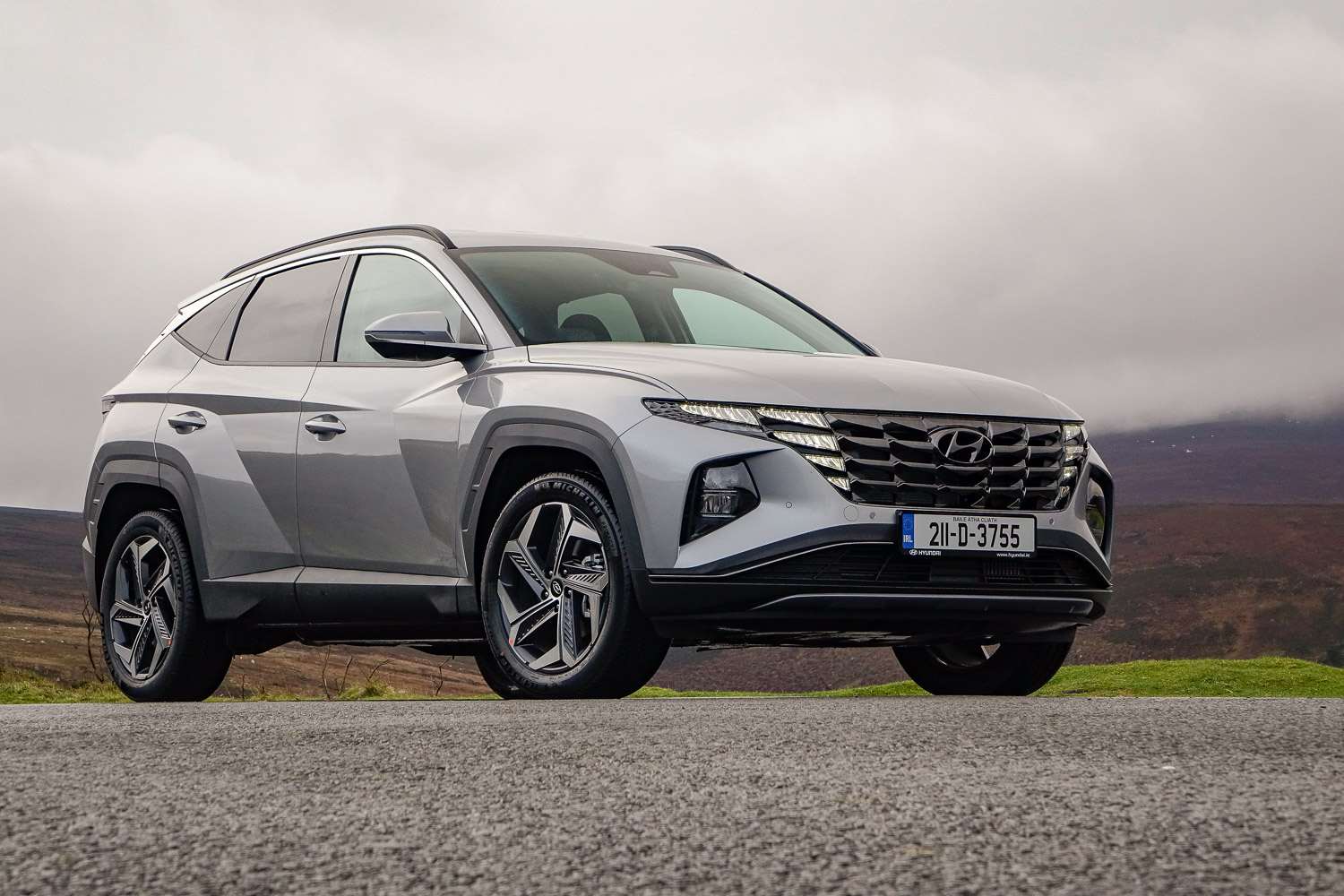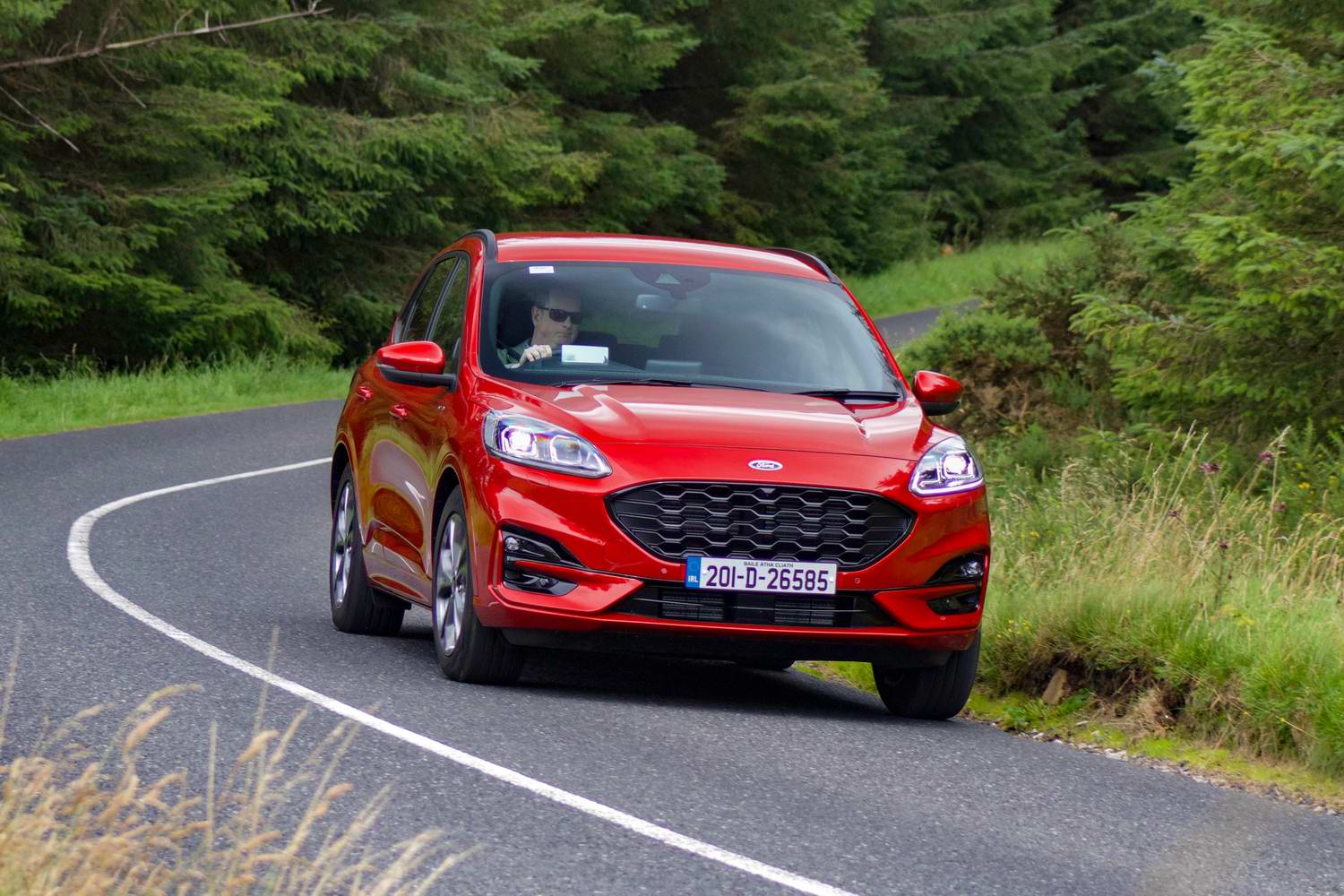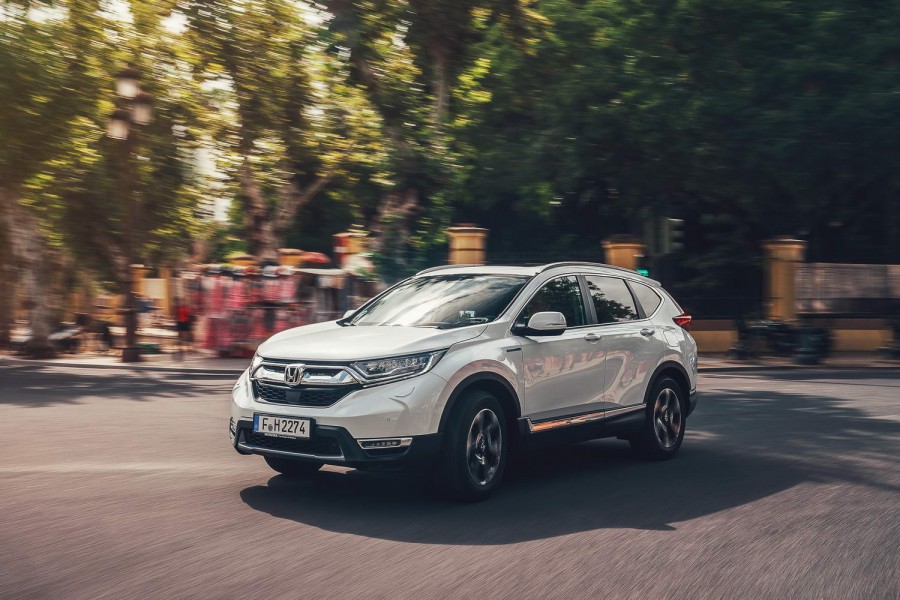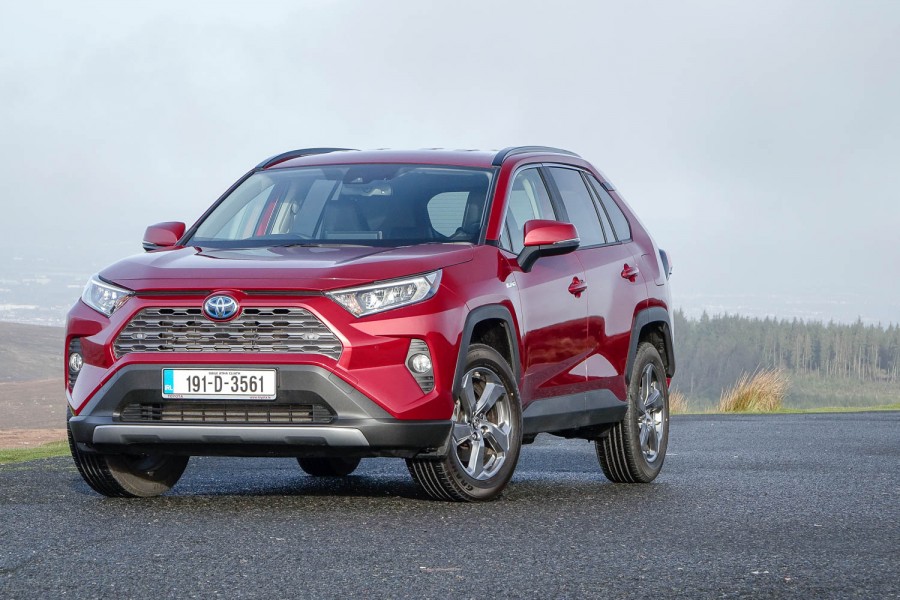In its final year of sales, 2020, the outgoing Hyundai Tucson was the second best-selling car in Ireland. Since its first full year of sales in Ireland (2016), it has either been in first or second overall. That should tell you all you need to know about how important it is to Hyundai Ireland. But rather than rest on its laurels, Hyundai has seemingly completely reinvented the Tucson crossover for 2021, giving it a daring new exterior design, a spacious and high-tech cabin, lots of new safety and a new focus on hybrid power. Cleverly, Hyundai Ireland has managed to get decent stock into the country in time for the registration plate changeover to '211' so we have an early chance to test one of the promising new models, the first of the hybrid versions.
In the metal
In one fell swoop, the Hyundai Tucson has gone from handsomely forgettable to simply spectacular to look at. Every inch of its exterior is interesting. None more so than the distinctive integration of the LED lights and front grille. When the lights are off, it looks like one large grille, and when illuminated, there's a unique light signature, too. Look closer and you'll find further detailing to the extremities of the lamp clusters, a shapely bonnet and actual sharpness to the way the metal in the front wings is folded.
Not everyone will like the side treatment with its riot of intersecting surfaces, sharp lines and unusual wheelarch definition, but it's certainly a talking point. The surfacing also serves to disguise the relatively long wheelbase. Helping with interior space, the new Tucson is 20mm longer, 15mm wider, 5mm taller and 10mm longer in the wheelbase than before. Meanwhile, the glasshouse itself is quite shallow, which, in conjunction with the chrome strip that tops it, fools your eyes into thinking you're looking at something sleeker than a regular family crossover. Our test car, in Executive Plus spec, features 19-inch alloy wheels, which assist with the stance, though I've seen a new Tucson on 18s and it doesn't look 'under-wheeled' at all.
There's more of interest at the back, where you'll find dramatically styled lights joined by a slender lightbar, as is the trend. The rear wiper is hidden under the roof spoiler and the Hyundai logo gets a prominent position, unusually integrated into the rear window glass. Meanwhile, the motif of the front grille is carried through to the surface of the rear bumper.
Inside, the design isn't quite as audacious, but it is refreshingly new and incredibly modern. The wraparound nature of the cabin grabs your attention, as the door cards run into the front fascia, emphasised by the elongated air vent style that ties in with the solid-feeling detail at the top of the doors. A large touchscreen dominates the centre of the dashboard (a 10.25-inch item featuring navigation on our test car), integrated with the touch-sensitive heating and air conditioning controls. It all looks great and, though we prefer to have traditional buttons and knobs for our climate control, it does work well. Response to your finger's input is particularly swift, which makes it more satisfying to use than similar ideas by other manufacturers to date.
Below that is a large storage area for your smartphone or whatever, with USB and 12-volt ports ahead of it, and wireless charging for such devices. The hybrid Tucson doesn't get a drive/gear shifter; instead, there's a collection of chunky buttons on the centre console for drive, reverse, neutral and park. Two cupholders fit next to all that and a large storage bin is found under the central armrest. As you poke around all this, you're likely to conclude that the Tucson is made of high-quality materials. And yes, the high-end test car has leather upholstery to help lift the ambience, but actually, only the entry-level Comfort version does without.
The big steering wheel looks odd at first, but its rim feels good to hold and the buttons on it are tactile to use and sensibly positioned. Behind it are the digital instruments, on a colour screen. It changes appearance depending on which driving mode you've selected, though avoids looking gimmicky at any stage. The front seats are comfortable and come with heating as standard.
In the back, there's more headroom than anyone will need, and the seat base is quite wide. That means it might be possible to get three children in there safely, depending on the sizes of their boosters or seats. The outer two positions get ISOFIX mountings and the angle of the rear seat backs can be adjusted for comfort. While the floor isn't completely flat, the raised centre portion isn't as obtrusive as it is in some cars, so three adults or teenagers should be fine in the rear. Hyundai says there is 26mm more legroom in the back of the new Tucson than its predecessor.
Given the generous equipment elsewhere in the car, we were surprised to find that the rear hatch doesn't open electrically, but no matter. Inside, the boot holds a huge 616 litres of luggage, including compartmentalised space under the floor. The rear seat back splits and folds down for extra-long loads.
Driving it
Our first drive in the new Tucson was in the hybrid model. This is not to be confused with the plug-in hybrid model due later in 2021. The regular hybrid does not need to be plugged in to charge up its battery. That's done by the engine and by using brake energy regeneration. Under the bonnet is a turbocharged 1.6-litre petrol engine, mated to a modest 44.2kW electric motor. The latter, producing the equivalent of 60hp, can drive the car on its own only for short periods at low speeds, due to the small capacity of the associated battery pack. Instead, the system is designed to assist the engine rather than replace it.
Hence, when the electric motor and petrol engine are working together, up to 230hp and 265Nm of torque are produced. That power output grabs your attention, but it's produced at relatively high engine revs, so we don't expect most drivers to exploit it regularly. And actually, the Tucson is at its least impressive when you put your foot all the way down for maximum performance. It scrabbles for traction exiting junctions in a hurry when the road is wet and, while there's nothing wrong with its acceleration, the engine becomes vocal. That's in stark contrast to how it behaves at more modest throttle openings, where it's the epitome of refinement and quiet.
Naturally, if you're gentle with the accelerator pedal, you'll see better fuel economy, too. We didn't get a chance to do a long motorway run in our first drive of the Tucson Hybrid, but saw an average of 8.0 litres/100km (35.3mpg) over a couple of cold and wet days around town and into the mountains for photography. We'd expect it to manage better at a cruise.
Our time in the car did serve to show how polished a product it is on the road, notably improving on its predecessor - hardly a bad car in itself. The quietness and refinement hit you first (unless you're gunning the engine, as mentioned), but the rest of the package works well, too. The steering is well-weighted and moderately accurate, the body stays flat through spirited cornering and the body control is exceptional, even over tricky undulations. The only tiny blot in an otherwise great performance is that the ride can be a little firm over sharp-edged ridges or tall speed bumps. I suspect that is partly to do with the 19-inch alloy wheels fitted to our test car and their low-profile tyres. Lower-spec versions get smaller wheels and taller tyre sidewalls, which should improve on the ride comfort. Saying that, it's not deal-breaking discomfort as is, so try to test-drive a car with the wheel size you're thinking of buying.
What you get for your money
Pricing for the new Tucson start at €32,845 - or €297.77 on PCP. That's for the 1.6-litre diesel in Comfort Plus specification. At the time of writing, the diesel model is only offered with a manual gearbox and front-wheel drive. The Tucson Hybrid tested here (referred to as HEV by Hyundai, for Hybrid Electric Vehicle) starts at €36,345 and is also only available with front-wheel drive for now.
That Comfort Plus trim includes 17-inch alloy wheels, the same leather-trimmed steering wheel as you see pictured here, heated front seats, automatic wipers and lights, electric folding door mirrors, electric windows all-round, reversing camera, Apple CarPlay and Android Auto smartphone integration, Bluetooth telephony, an eight-inch touchscreen and an absolutely huge array of active safety equipment. Head over to www.hyundai.ie for the full specs, but do watch out for small differences between the same trim levels, depending on whether there's a diesel engine or hybrid powertrain under the bonnet. No matter what way you cut it, though, the Tucson is good value.
Summary
It's a safe bet to say the new Hyundai Tucson will be one of the best-selling cars of 2021 in Ireland. It replaces a model with a loyal following, adding refinement, technology, equipment and more than a little dash of style to the crossover's solid dependability. This hybrid version beats a new Nissan Qashqai and revamped Volkswagen Tiguan to market, which will also give it a head-start on sales, too. That's all underscored by its value-for-money proposition. Make no mistake: the Tucson is likely to continue to be Hyundai Ireland's most important model for years to come.





































